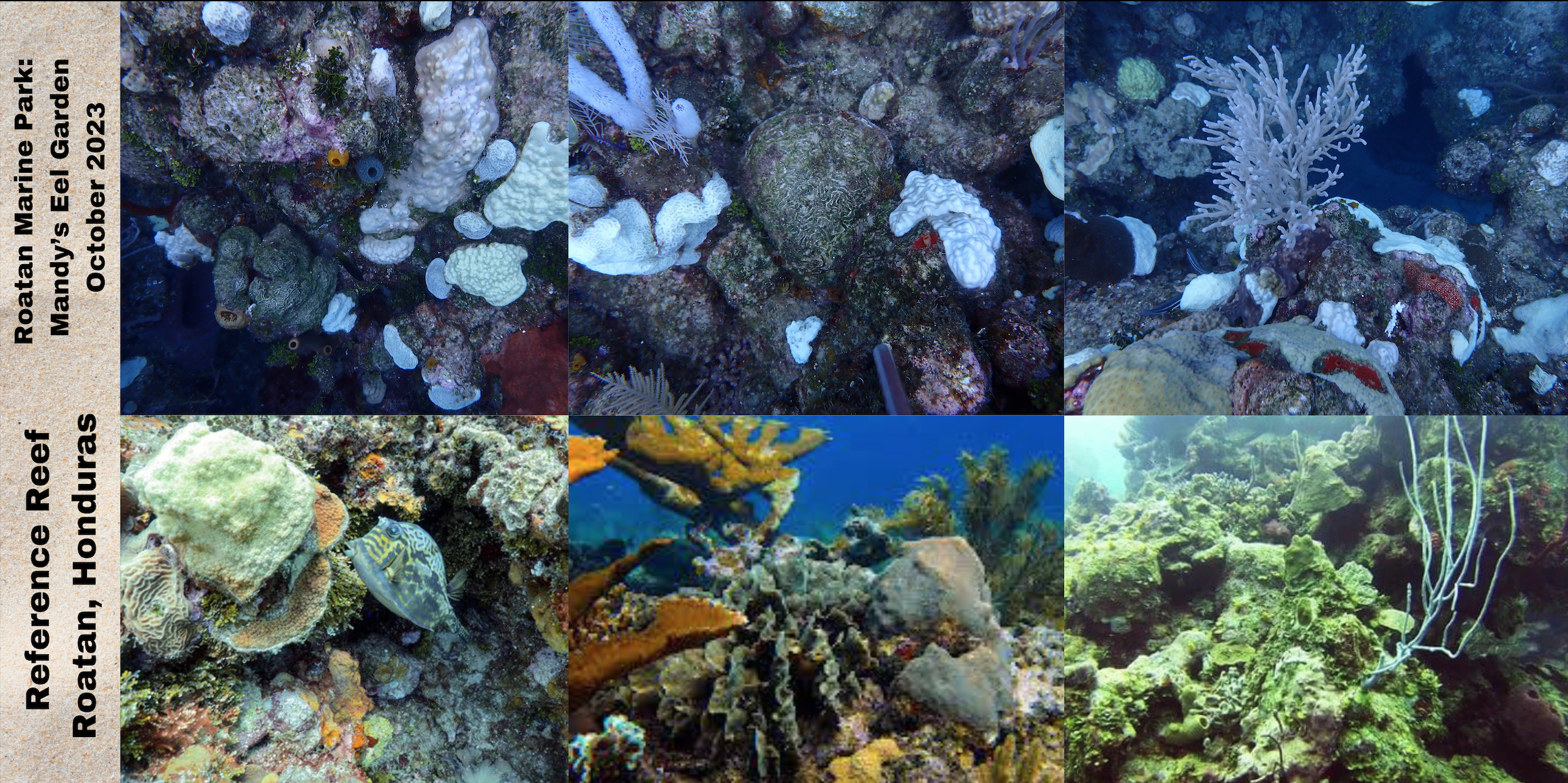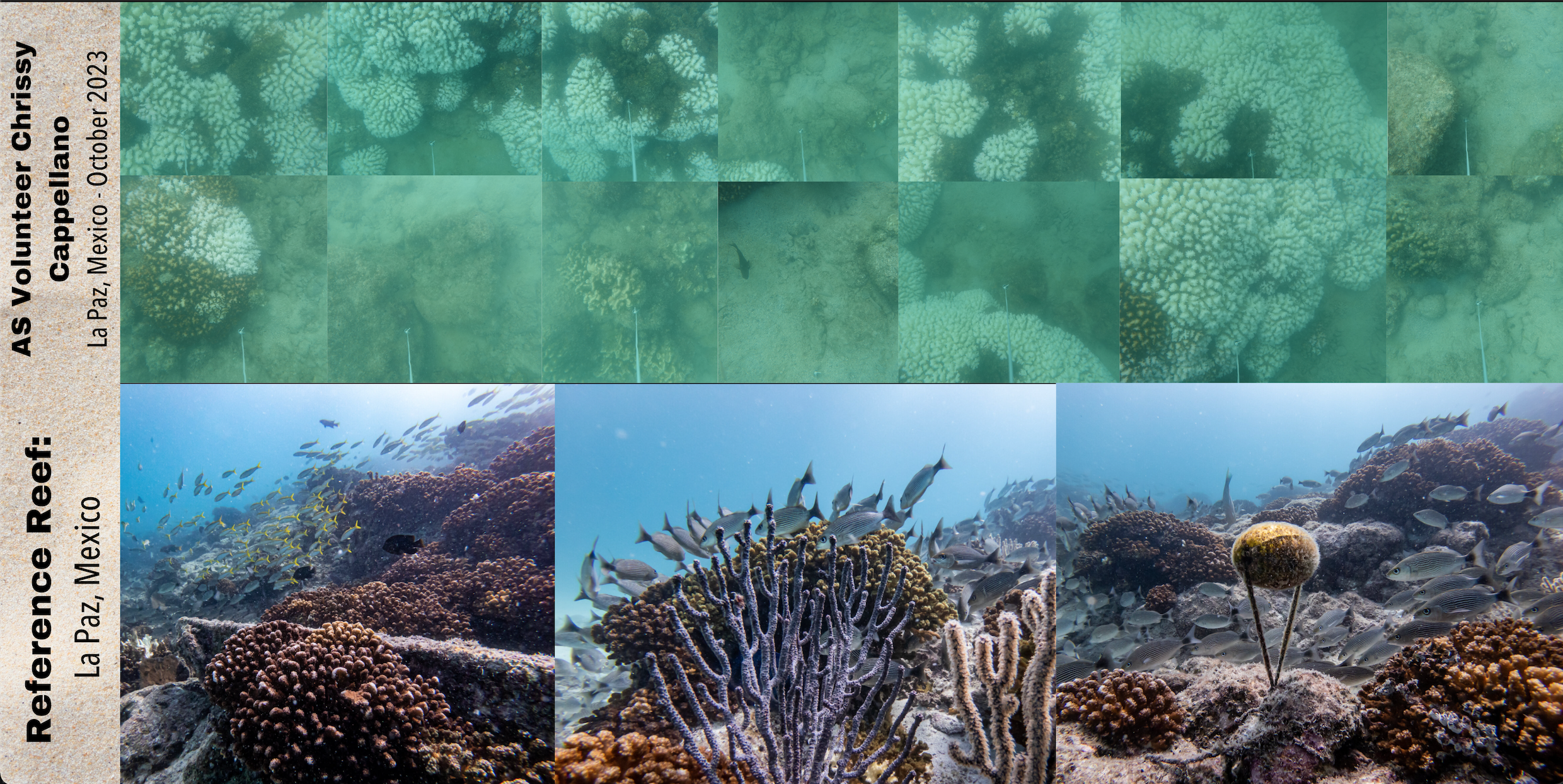Coral reef bleaching is undoubtedly one of the most pressing environmental issues of our time. Reefs are the most biodiverse of all marine ecosystems, harboring an estimated 25% of all marine species despite covering less than 1% of the ocean floor. They are among the most productive environments on earth and perform vital ecological functions such as protecting coastlines from storms, absorbing atmospheric carbon, and feeding human populations. Their existence is quintessential to the health of life on land as well as in the ocean. Despite this, they are among the most endangered ecosystems with over 50% percent of reefs having died in the last 30 years and over 90% at risk of collapse.

Fig. 1) Transect photos from a reef transect conducted in the Bay Islands of Honduras by Adventure Scientist partner Roatan Marine Park.
Adventure Scientists’ Ground Truth Coral Bleaching project is an ongoing reef monitoring effort partnered with Dr. Andrea Rivera-Sosa of the Coral Reef Alliance and the Allen Coral Atlas (ACA). The ACA is a groundbreaking satellite monitoring technology that tracks coral bleaching worldwide. The first of its kind, ACA has the potential to help create marine reserves, direct artificial reef creation, or assist in the study of coral that is resistant to warming oceans. Its accuracy, however, must be confirmed by divers in the field. This is where Adventure Scientists comes in. An important part of our mission is to “facilitate data collection in the field while having a conservation focused impact on marine biodiversity.” Confirming the accuracy of ACA and coral bleaching locations strongly aligns with our goals.
Engagement in this effort has already led to exceptional partnerships between Adventure Scientists and coral conservation organizations, dive clubs, and individual divers across the globe – in Central America, Indonesia, and Baja California. The results of these collaborations are data from dozens of reef transects, which provide valuable insight into the condition of reefs on an international scale. One of these partners, Roatan Marine Park (RMP), is a community-based non-profit organization active in Honduras’s Bay Island National Marine Park (BINMP), which protects 650,000 hectares of Mesoamerican Barrier Reef. Their indispensable work includes patrolling and enforcing environmental legislation in the park, designing and implementing marine infrastructure projects, educating the public, and performing research and monitoring on the reef. Our partnership resulted in sixteen transects on four dive sites: Mandy’s eel garden (Figure 1), Dara’s Dream, Diane’s Dream and Overheat. The images reveal a high percentage of bleaching on the majority of stony corals. Despite this, the reef still supports a rich diversity of sea life including the Caribbean’s iconic tube sponges and fish species such as the Royal Gramma.

Fig. 2) Transect photos from a reef transect conducted by Adventure Scientist Volunteer Chrissy Cappellano showing a high percentage of bleaching. Reference photo source: Jason Daniel Shaw
Adventure Scientists’ volunteer in La Paz, Chrissy Cappellano, offered us yet more insight from her dives off the Pacific Coast of Mexico. The heavy bleaching revealed by her transects (Figure 2.) was not visible on the ACA due to the region’s rocky shoreline. This drew attention to the need to refine the Atlas’ capabilities in the Mexican Pacific and regions with similar geography. Chrissy, who has been diving and living in La Paz for the last seven years, said the reefs this year were the most bleached she had seen. She was able to deliver the transect photos despite hurdles caused by a category 1 hurricane, Norma.
The Allen Coral Atlas ground truthing project remains active, with photos being sent to the team at Coral Reef Alliance. Adventure Scientists is very grateful for the dedicated volunteers who have highlighted both the scale of the bleaching crisis and willingness of people to contribute to advancing conservation solutions.
This update was written by cj@adventurescientists.com, reef transect collages were created by Taylor Fry media@adventurescientists.com
